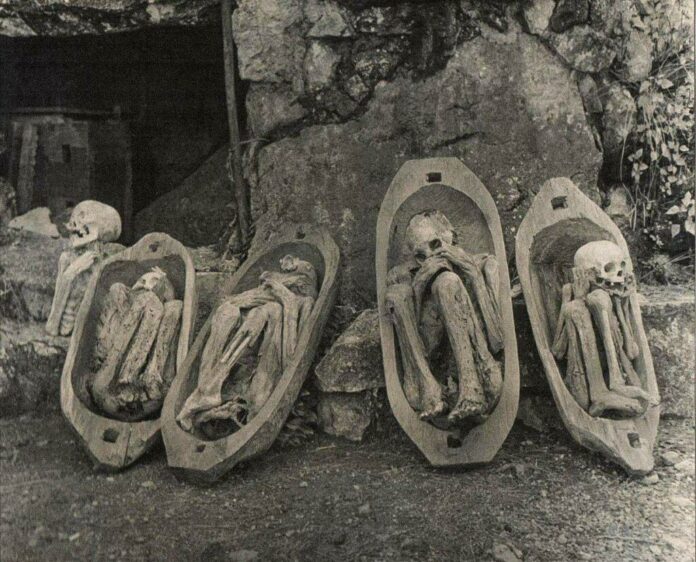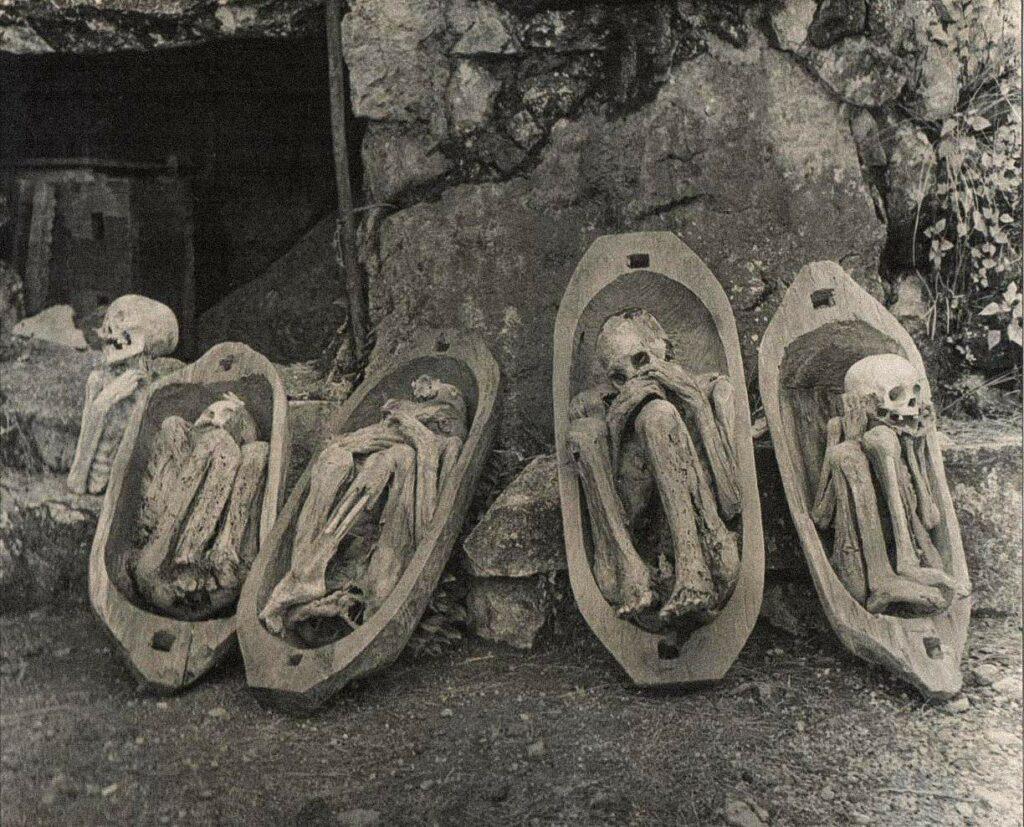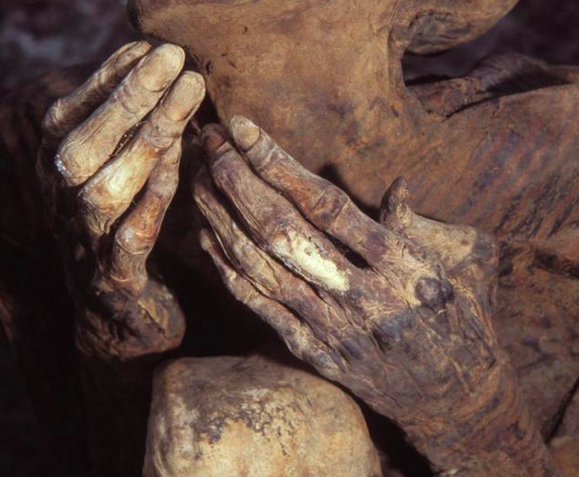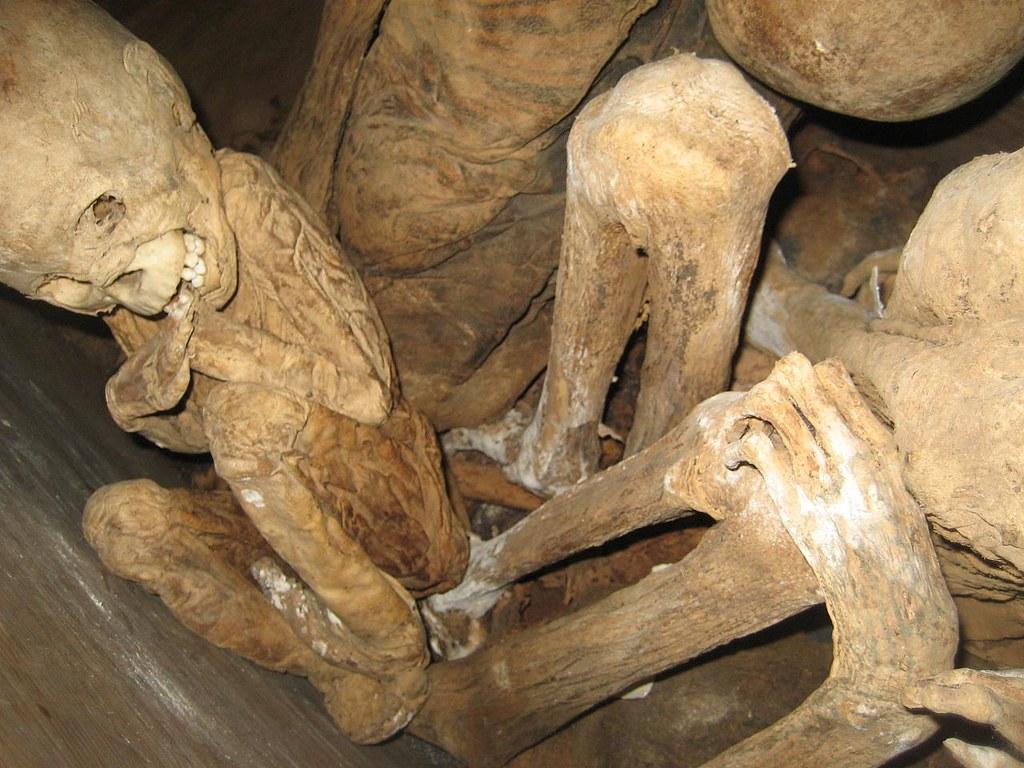Unearthing the Enigma: Unveiling the Secrets of the Burnt Human Mummies in the Kabayan Caves

Within the enigmatic depths of the Kabayan Caves, a profound secret lies concealed, awaiting discovery by those brave enough to venture into its ancient corridors. This secret elicits both awe and trepidation, as hidden within these dim recesses rest the charred human mummies, silent witnesses to a forgotten era. Enshrouded in mystery and obscured by the passage of centuries, these unsettling specimens have enraptured the imagination of scientists, anthropologists, and adventurers alike, beckoning them to unravel the enigma that enshrouds their existence. What arcane rituals, burial practices, or ancient beliefs could have given rise to the creation of these macabre relics?

The Ibaloi Mummies, also known as the Fire Mummies, Beñguet Mummies, and Kabayan Mummies, represent a captivating archaeological find in several caves near the town of Kabayan, located in the Benguet province of the Philippines. Among these caves, notable ones include Timbac, Bangao, Tenogtol, Naapay, and Opdas. These caves served as sacred burial grounds for the ancient Ibaloi people, housing the remains of their ancestors.
The discovery of the Fire Mummies in the early 20th century fascinated Westerners, although the local communities had been aware of them for hundreds of years. Unfortunately, due to the lack of protection in the caves, many of the mummies were stolen. This prompted Monument Watch, a nonprofit organization, to designate the site as one of the 100 most endangered sites in the world.
The process of fire mummification: When did it all begin? Scientists believe that the Fire Mummies were created by the Ibaloi tribe between 1,200 and 1,500 CE in five towns in Benguet. However, there are arguments suggesting that the mummification process started much earlier, around 2,000 BCE. What sets the Fire Mummies apart is their intricate mummification process.

Rather than mummifying the body after death, the process of fire mummification would commence shortly before a person’s passing. They would consume a highly saline solution to aid in dehydration. Following death, the body would be washed and positioned over a fire in a seated posture, allowing the fluids to dry. Tobacco smoke would be blown into the mouth to further desiccate the internal organs. Finally, herbs were rubbed onto the body before it was placed in a pine wood coffin and laid to rest in caves or other burial sites.
Lootings and vandalism became prevalent as the locations of many of these caves became known due to intensified logging operations in the area. Unfortunately, some visitors were eager to leave their mark on the Kabayan mummies, including graffiti. One notable mummy, Apo Annu, was stolen in the early 1900s and later returned to the Ibaloi tribe due to belief in his supernatural powers.
Despite these efforts, the Fire Mummies remain at risk due to the limited security in their natural caves. Officials are aware of the locations of 50-80 other mummies but refuse to disclose them out of fear of further vandalism. To raise awareness and provide access to these historical treasures, a small museum in Kabayan, Benguet displays a few mummies.
The Kabayan Mummy Burial Caves: A World Heritage Site

The Kabayan Mummy Burial Caves, located in Kabayan, Mountain Province, Philippines, hold the distinction of being recognized as National Cultural Treasures by the National Museum of the Philippines under Presidential Decree No. 374. Moreover, there are ongoing considerations to nominate them as a UNESCO World Heritage Site. The intention behind designating these caves as protected areas is to ensure the preservation of the mummies and safeguard them against further theft and vandalism.

The mummification process of the Kabayan tribe in the Philippines, known as fire mummification, demonstrates the creativity and meticulousness of their burial practices. Exploring the caves housing the Kabayan mummies is a captivating experience that combines history, archaeology, and spirituality. Visitors have the opportunity to marvel at the meticulous mummification techniques employed by the Ibaloi people centuries ago.
The caves themselves exude a sense of sacredness, as they were considered sacred spaces for the final resting place of the departed. It is crucial to approach these caves and the mummies with the utmost respect and reverence. They are not mere artifacts but symbols of a vibrant past that deserve preservation and appreciation. As visitors venture into these caves, they enter a realm where time stands still, connecting with ancestral spirits and immersing themselves in the rich tapestry of Ibaloi culture.
News
The Hanging Temple: China’s 1,500-Year-Old Cliffside Marvel of Faith and Engineering
The Hanging Temple: China’s 1,500-Year-Old Cliffside Marvel of Faith and Engineering Perched precariously on the cliffs of Mount Heng in Shanxi Province, China, the Hanging Temple, also known as Xuankong Temple, Hengshan Hanging Temple, or Hanging Monastery, is an architectural…
The Willendorf Venus: A 30,000-Year-Old Masterpiece Reveals Astonishing Secrets
The Willendorf Venus: A 30,000-Year-Old Masterpiece Reveals Astonishing Secrets The “Willendorf Venus” stands as one of the most revered archaeological treasures from the Upper Paleolithic era. Discovered in 1908 by scientist Johann Veran near Willendorf, Austria, this small yet profound…
Unveiling the Maya: Hallucinogens and Rituals Beneath the Yucatán Ball Courts
Unveiling the Maya: Hallucinogens and Rituals Beneath the Yucatán Ball Courts New archaeological research has uncovered intriguing insights into the ritual practices of the ancient Maya civilization. The focus of this study is a ceremonial offering found beneath the sediment…
Uncovering the Oldest Agricultural Machine: The Threshing Sledge’s Neolithic Origins
Uncovering the Oldest Agricultural Machine: The Threshing Sledge’s Neolithic Origins The history of agricultural innovation is a fascinating journey that spans thousands of years, and one of the earliest known agricultural machines is the threshing sledge. Recently, a groundbreaking study…
Nara’s Ancient Sword: A 1,600-Year-Old Protector Against Evil Spirits
Nara’s Ancient Sword: A 1,600-Year-Old Protector Against Evil Spirits In a remarkable discovery that has captured the attention of archaeologists and historians alike, a 7.5-foot-long iron sword was unearthed from a 1,600-year-old burial mound in Nara, Japan. This oversized weapon,…
The Inflatable Plane, Dropped Behind the Lines for Downed Pilots
Experimental The Inflatable Plane, Dropped Behind the Lines for Downed Pilots The Inflatoplane from Goodyear was an unconventional aircraft developed by the Goodyear Aircraft Company, a branch of the renowned Goodyear Tire and Rubber Company, also famed for the Goodyear…
End of content
No more pages to load











